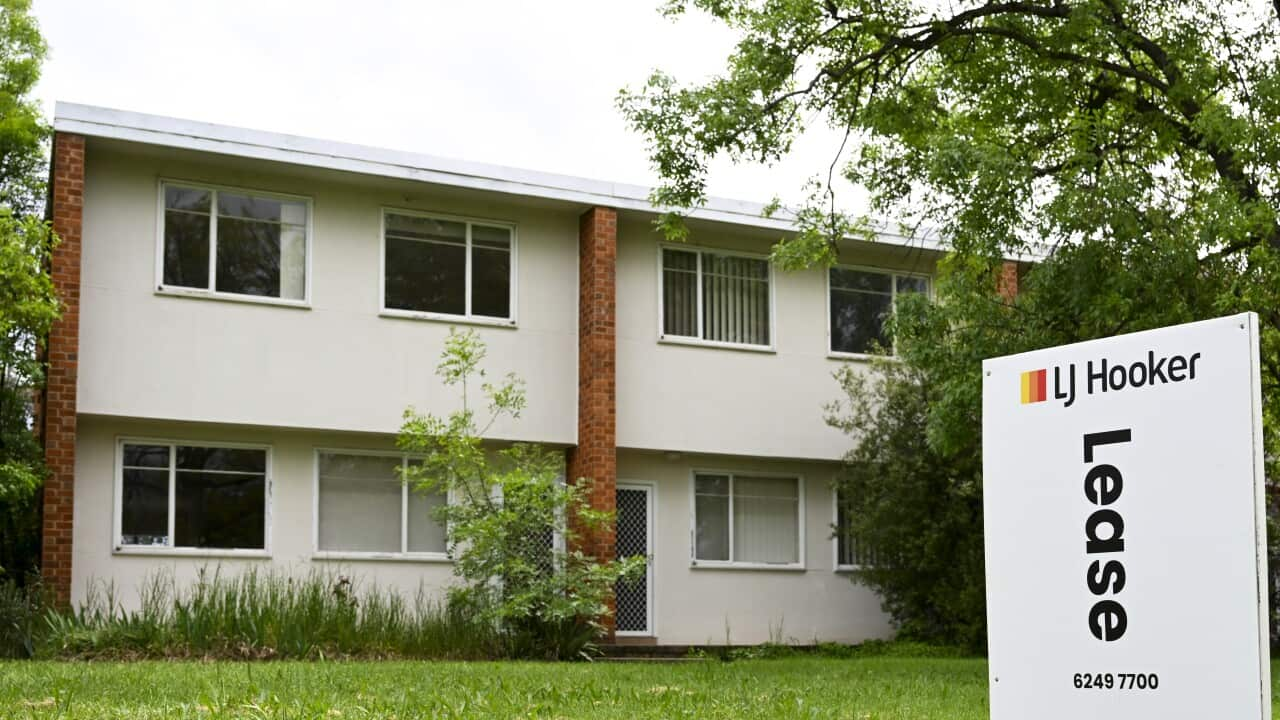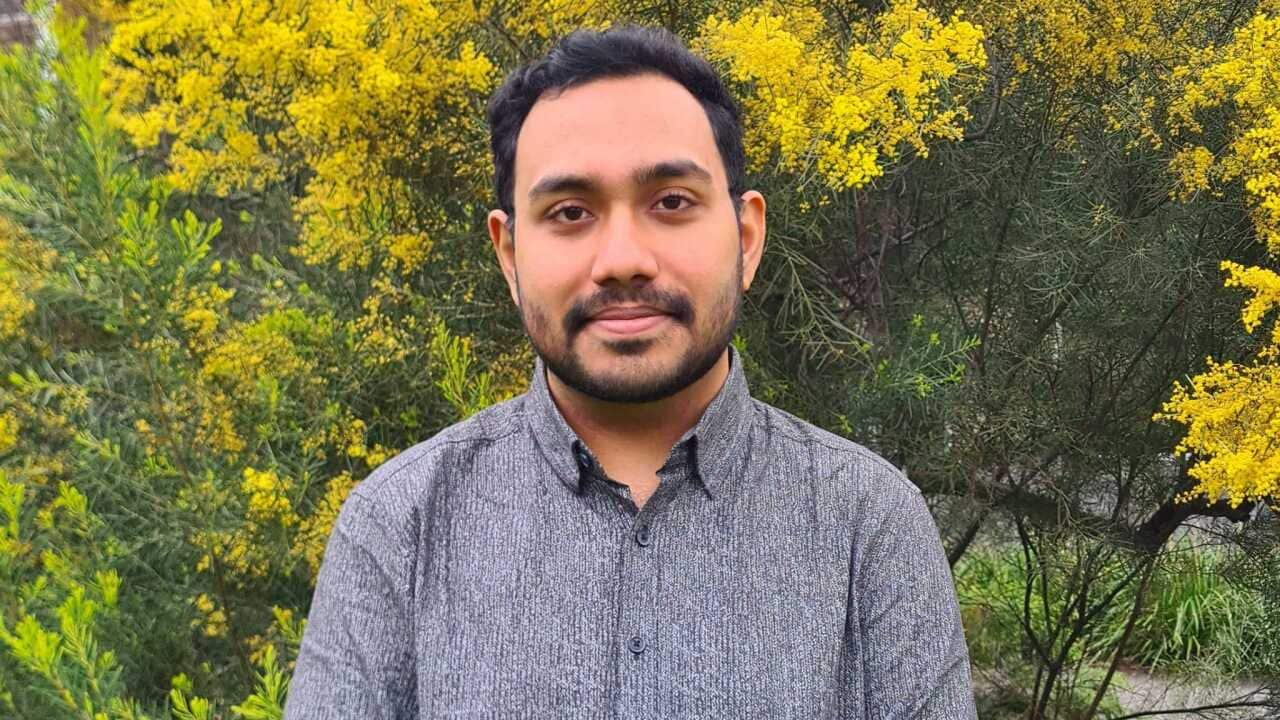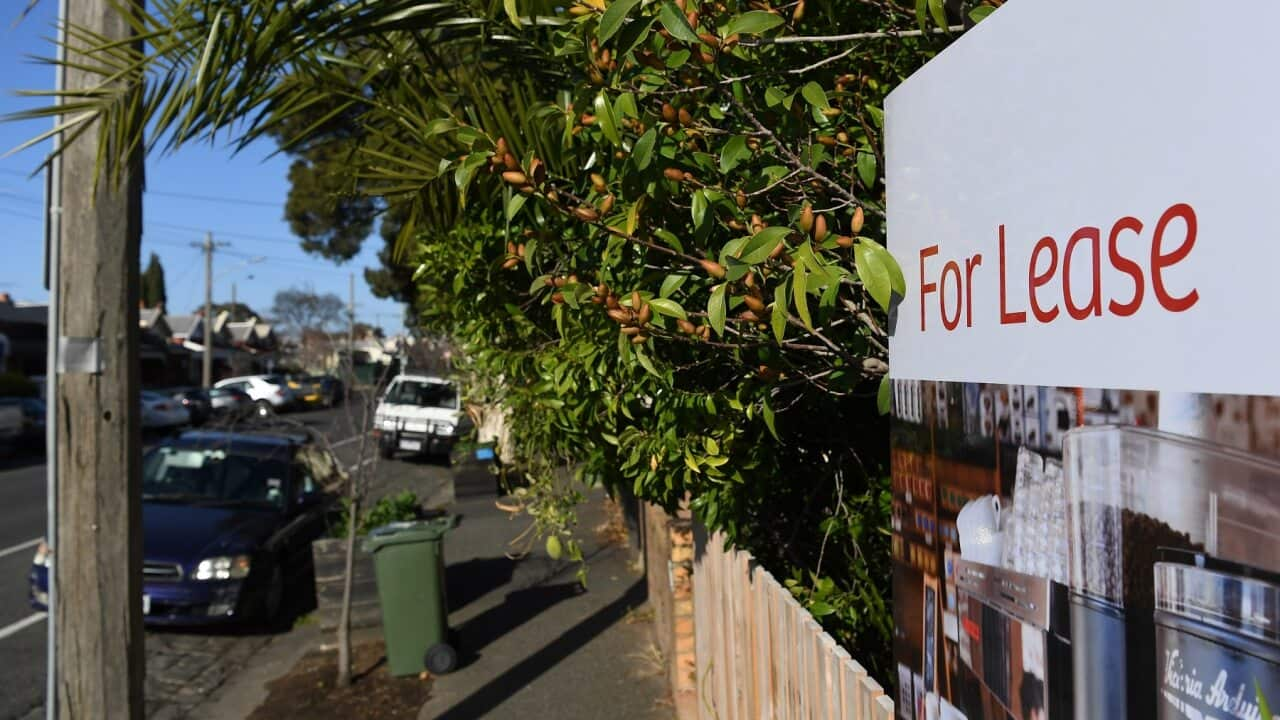Key Points
- Lisa Dodson lives with her mother and her two adult sons in a rental property to share costs.
- Experts say the number of Australians living in multi-generational households appears to be increasing.
- It comes as a UK study found positive mental health benefits for young adults who move back home.
Lisa Dodson's family have navigated cost of living pressures and rental hikes by living under the same roof.
The 49-year-old lives with her mother, her two adult sons and their partners in the home in Dawesville, about 80km south of Perth.
"We have a pretty full house!" she told SBS News.
"We can have up to six people in there. And then we have three cats, two dogs and two fish."
Ms Dodson has lived with her mother, who receives pension payments, for about 10 years. She first moved into the property with her sons seven years ago.
She said her son Mitchell, 23, studies and works three part-time jobs, but this wasn't enough to cover the cost of . Her other son Daniel, 21, who works full-time, moved back home last year.
"His lease ran out and he moved back in. Since then, rents have skyrocketed," she said.
"I work full time. I'm on a fairly good wage. But if my rent was $500 a week on my own, I couldn't do that and do other things."
The family is paying $400 per week for the property. Ms Dodson has turned the lounge room into her living space, while her mother has the master bedroom and a separate bathroom, and her sons each have their own rooms.
"We were a bit worried about if the landlord was happy about all of us staying under the one roof, and they were, so we're very grateful," Ms Dodson said.
"We all band together and pay our share.

Lisa Dodson lives with her mother and two sons (pictured). Source: Supplied
The Dodson family is not alone in their experience of multi-generational living, with some experts saying the trend appears to be on the rise in Australia.
For some, this comes down to rent and cost of living, but for others, it's long been a part of their life and upbringing.
'People are looking for other solutions'
With low vacancy rates for houses and apartments in every major city and the regions causing rents to skyrocket, the Australian Housing and Urban Research Institute's managing director Michael Fotheringham said some people are turning to other available housing options.
"One of the outcomes of not having enough rental stock is competition for the places we have," he told SBS News.
"That competition can lead to things like rent bidding and increases in rent. That is making our rental market not only unavailable, but also very unaffordable — and so people are looking for other solutions for their accommodation."
Alice Pennycott is the principal lawyer for tenancy at Circle Green Community Legal in Perth. She said the state is experiencing the lowest vacancy rates for private rentals in over 40 years.
"We're seeing people who are low-income, and now middle-income, getting priced out of the private rental market because rents are becoming unaffordable because of the demand," she told SBS News.
"The wait list for social housing and community housing is rapidly growing - and much bigger than it has been previously - because more people are finding they don’t have any other available housing options."
She said some people are experiencing rough sleeping while others are opting for varying degrees of “insecure tenure,” including moving back in with family.
But she warned there could be "concerning" implications for parents who are renters themselves and may not be allowed to house more occupants based on their lease.
Is multi-generational living on the rise in Australia?
While data on housing decisions is complex, Dr Fotheringham said the number of Australians living in multi-generational households — broadly defined as including two or more adult generations — appears to be increasing.
"It certainly seems to be a cost of living decision," he said.
Lixia Qu, senior research fellow at the federal government's Australian Institute of Family Studies (AIFS), said both multi-generational family living and young adults living with parents have been on the rise over recent decades.
She referred to data from the 2021 Census, which found 47 per cent of young people aged 20 to 24 were living with parents — an increase from 43 per cent in 2016 and 42 per cent in 2001.
"The soaring costs of housing in most capital cities, along with the longer years the younger generation spends in full or part-time study and instability of employment among young adults, would reinforce this trend," she told SBS News.

A graph showing the makeup of extended family householders between 1991 and 2016. Source: Supplied
Edgar Liu, senior research fellow at the UNSW's City Futures Research Centre, surveyed multi-generational living in Australia about a decade ago. He said while the overall proportion of people in these households hadn’t markedly changed, their makeup had.
"From our Census analysis, young adults remain the largest share, but the fastest growing age cohort was 65 and over," he said.
Dr Liu said just over half of survey respondents offered financial reasons as one of their drivers.
‘It was a legacy’: Multi-generational living across cultures
For Rajkeerat Singh Sethi and his family, their reasons were different.
Mr Sethi is from India and lives with his parents, aged 70 and 73, and his wife and their two daughters, aged 8 and 10, in south-east Melbourne. He has a mortgage.
"Back in India, living together in a family home is quite a normal thing," he told SBS News.
"Growing up, it was not just my mother, my father, my brother and I — it was also my dad’s brother, his wife and three kids. It wasn’t a nuclear family, as it is referred to; it was more of a joint family."
Mr Sethi migrated here 13 years ago, and his parents followed eight years later.
"My parents were growing old and needed somebody to care for them. I wanted my kids to have the benefit of growing up with grandparents around," he said.
"I grew up in a joint family, I've seen my parents take care of their parents. It was a legacy which was brought down. For me, it was a natural thing to follow."
Dr Liu said certain cultural backgrounds are more likely to live in multi-generational households, whether for cultural or practical reasons, such as migrants who might not have resources to set up separate homes.
Dr Fotheringham said while Western cultures have focused on the nuclear family model, more complex models of housing are "more normal" across the world.
"The idea that each household is a nuclear family on its own is a very recent historical phenomenon," he said.
UK study finds improved mental health for 'boomerang adults'
While Ms Dodson's family "have their moments", she said the experience has been generally positive.
"We are very lucky that we were able to do this and that we do get on," she said.
"We're all adults in this house and we all have the same respect for each other, and that’s a big thing."
Her son Mitchell said: "We all have our problems, like every family does. But we all do work together and we help out."
"At this stage, I prefer living at home because it's more affordable."

For the Dodson family, living under one roof has been generally a positive experience. Source: Supplied
A new study published in the United Kingdom this week found that "boomerang adults" aged between 21 and 35 who moved back in with their parents enjoyed improved mental health.
The first UK research to look at the mental health impact of a move back home, it found 15 per cent of young adults had done so at some point during 2009-2020. One reason for this was being unable to afford rent.
The findings surprised researchers, who expected a dip in adult children's mental health due to loss of independence. Instead, they suggested the results may come down to escaping the stress of poor living conditions in the UK's "under-regulated" rental housing sector.
Dr Fotheringam said the UK results speak to the social benefits of "being in it together".
"Actually, having those shared experiences of the day-to-day can be really positive, and it can help to reduce a sense of isolation, or doing it tough on your own," he said.
"If the housing is suitable for multi-generational living, if there's enough room for people to have private spaces and some shared space to be living together, then it can actually be a really good way to go about it.
"As much as cost of living may be the initial trigger for the move, there are likely to be some households that continue with these arrangements, much longer than financially driven, because they actually find it really positive."
Ms Dodson said the family hopes to live in their own homes one day. For now, she encouraged others who are struggling to "give it a go" if they're able to do so.
"You're not just surviving on your own."













